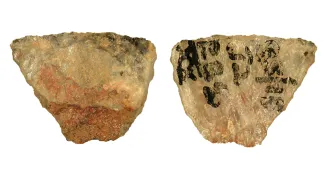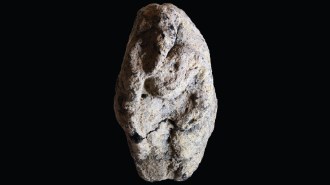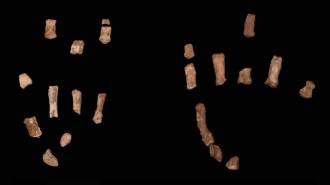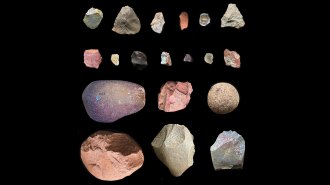Shells may represent oldest known beads
Three sea-snail shells previously discovered at Stone Age sites in Israel and Algeria contain intentionally fashioned holes in their centers, making the finds the oldest known examples of personal decoration, a research team says.
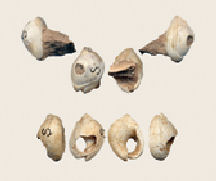
The trio of perforated shells apparently served as beads, conclude Marian Vanhaeren of University College London and her colleagues. Holes in the shells look nothing like those that occur naturally in modern sea-snail shells, the scientists report in the June 23 Science.
They identified two of the ancient beads among artifacts held in a British museum. Both shells had been uncovered in a section of Israel’s Skhul Cave that has yielded 10 human skeletons dated to between 135,000 and 100,000 years ago.
The third shell came from material held in a French museum. It was unearthed at Oúed Djebbana in Algeria, a site that has yielded stone tools dating to between 90,000 and 35,000 years ago.
Both Skhul and Oúed Djebbana lie far enough from the Mediterranean Sea that sea-snail shells could have been present only if people brought them there, the investigators say.
The three shells derive from the same sea-snail genus as do 75,000-year-old perforated shells previously found in a South African cave.
Bead working spread among people living in Africa and the Middle East long before modern Homo sapiens arrived in Europe around 40,000 years ago, Vanhaeren and her coworkers suggest.
